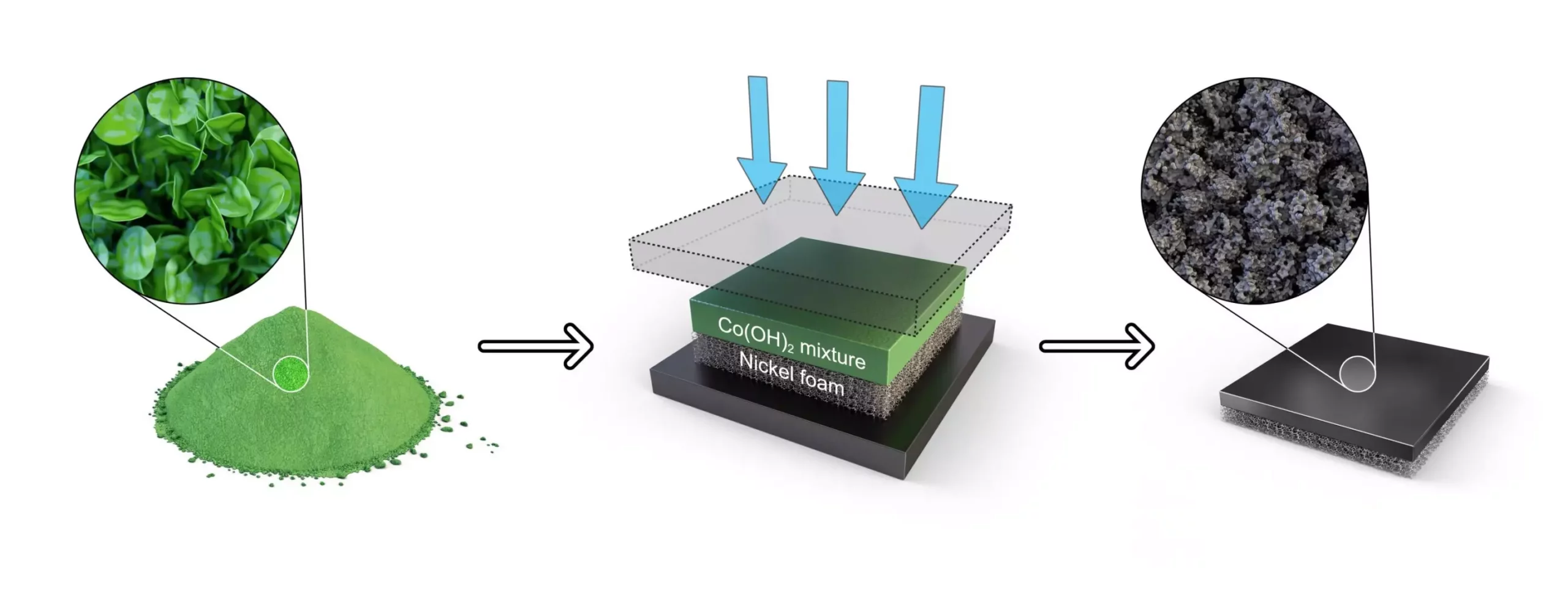A groundbreaking research study conducted by Dr. Sung Mook Choi and his team at the Korea Institute of Materials Science has introduced an innovative one-step electrode fabrication process for anion exchange membrane water electrolysis. This process, which has been published in the prestigious journal Applied Energy, marks the first time such a technique has been developed in South Korea. By directly producing electrodes from raw materials to a mass-producible level, this new method has the potential to revolutionize the field of water electrolysis technology.
The key feature of this new electrode fabrication process is the utilization of a one-step hot-pressing technique. By converting cobalt hydroxide into a cobalt oxide catalyst and simultaneously forming a uniform catalyst layer, this method eliminates the need for complex steps such as hydroxide-oxide-crushing-dispersion-coating-drying. The team’s research indicates that this streamlined approach reduces the process complexity by 60% compared to traditional methods, while also enhancing the efficiency of hydrogen production and the durability of the electrodes during continuous operation.
To ensure the effectiveness of the one-step electrode fabrication process, the research team focused on developing a catalyst layer comprising uniform oxide particles that are 10 nanometers in size. By carefully controlling the cobalt hydroxide slurry conditions, as well as the temperature and pressure during the hot-pressing process, the team was able to achieve optimal results. This meticulous approach has enabled the creation of a highly stable and efficient electrode for anion exchange membrane water electrolysis systems.
The newly developed electrode has been successfully integrated into a membrane electrode assembly (MEA) incorporating an anion exchange membrane and a hydrogen evolution catalyst. Through extensive testing in commercial-scale water electrolysis cells, the stability and performance of the electrode have been confirmed. The research team’s findings indicate that the application of this technology could lead to significant advancements in green hydrogen production, with the potential to reach 11 million tons and 69 gigawatts of capacity by 2030.
In light of these promising results, efforts are currently underway in Korea to develop technology for a megawatt-level anion exchange membrane water electrolysis system by 2024, with the goal of commercializing the technology by 2030. While the domestic level of anion exchange membrane water electrolysis technology currently stands at 70-80% of world-class standards, further investment and localization efforts are needed to enhance competitiveness. By securing the source technology for mass-produced electrode manufacturing, Korea aims to establish a global leadership position in water electrolysis technologies and dominate international markets.
Dr. Sung Mook Choi, the principal researcher behind this groundbreaking study, emphasizes the significance of the one-step hot-pressing electrode fabrication process in advancing the commercialization of anion exchange membrane water electrolysis. By addressing key challenges and pushing the boundaries of technological innovation, the research team has made a significant contribution to the field of sustainable energy production. The successful development and application of this novel electrode fabrication process represent a major step forward towards achieving high hydrogen generation efficiency and promoting the widespread adoption of green hydrogen technologies.


Leave a Reply